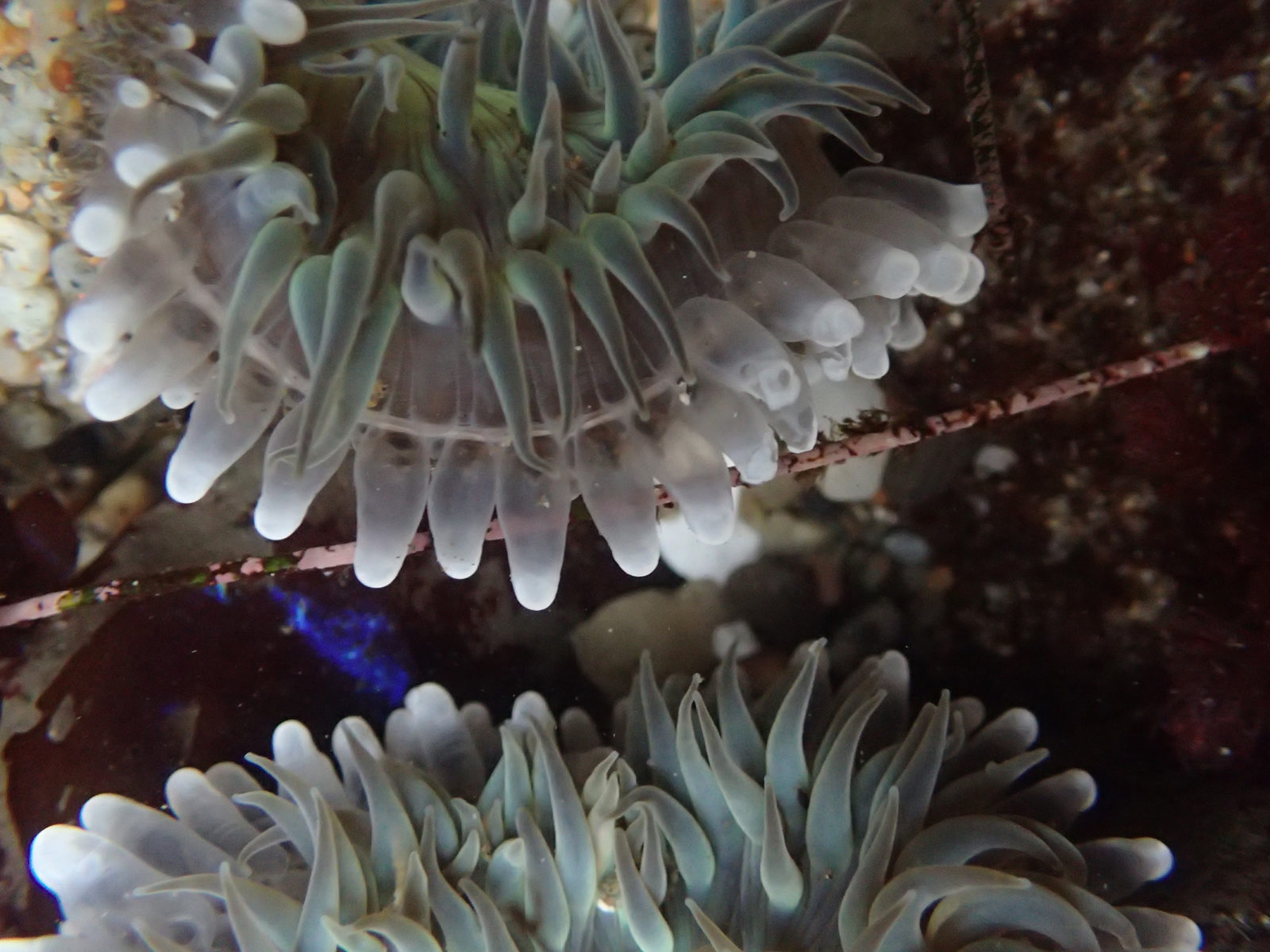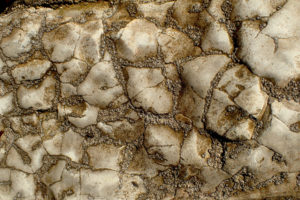A long time ago, on a little blue planet tucked away in a galaxy called the Milky Way, a great adventure took place. We don’t know exactly when it happened, but it must have been very shortly after the evolution of the first living cells. First, some small prokaryotic cell walled itself off from its surroundings. By doing so, it defined the biological concept of “self.” Then it learned how to divide and make copies of itself, forming a clone of genetically identical units. Sooner or later, however, our clone of cells encountered cells that were not genetically identical to them. These foreign cells were “other” and were recognized as such because they had a different set of markers on their outer covering. For the first time, life had distinguished “self” from “non-self.” It was a crucial step in the evolution of life on Earth.
The entire immune system in vertebrates is based on self/non-self recognition. It is why, for example, transplanted organs can be rejected by their new host—the host’s immune system detects the transplanted tissue as “non-self” and attacks it. As a result, patients who receive donor organs usually take immune-suppressing drugs for some period of time after the transplant.
The vertebrate immune system is quite complex and very interesting. But even animals much less structurally complex than vertebrates have some ability to recognize self from non-self.
Sponges, for example, exist as aggregations of cells rather than bodies with discrete tissues and organs. Most zoologists, myself included, consider sponges to be among the most ancient animal forms. They have several different types of cells, many of which retain the ability to move around the body and transmogrify from one type to another as needed; this “totipotency” is a feature that sponge cells share with the stem cells of vertebrates. There are sponges that you can push through a mesh and disarticulate into individual cells, and then watch as the cells re-aggregate into an intact, functioning body. As if that weren’t cool enough, if you take two different sponges and mush them into a common slurry, the cells from the distinct lineages re-aggregate with cells to which they are genetically identical. So even animals as primitive as sponges have some degree of self/non-self recognition.
If you’re lucky, you can observe self/non-self recognition and aggression in a common tidepool animal.
Here in Northern California we have four species of sea anemones in the genus Anthopleura:
- Anthopleura xanthogrammica, the giant green anemone
- Anthopleura sola, the sunburst anemone
- Anthopleura elegantissima, the cloning anemone
- Anthopleura artemisia, the moonglow anemone (and my personal favorite)
Of these, only A. elegantissima clones. It does so by binary fission, which means that the animals rip themselves in half.
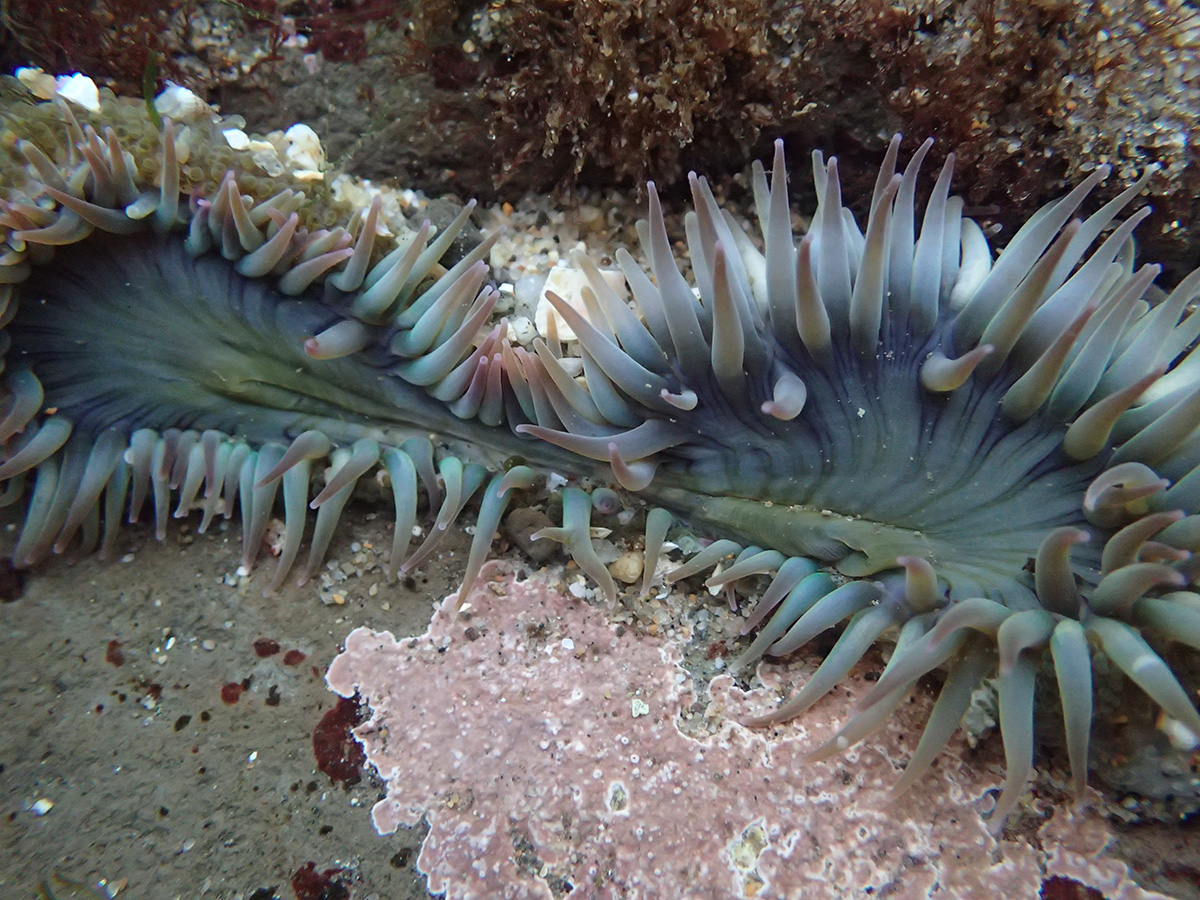
It looks painful, doesn’t it? As the two halves of the animal walk in opposite directions they pull apart until the tissue joining them stretches and eventually tears. Then each half heals the wound and carries on as if nothing extraordinary had happened. Each animal is now a physiologically and ecologically independent animal, and can later go on to divide again. And so on. The logical consequence of all this replication is a clone of genetically identical anemones spreading over a rocky surface. And that’s exactly what you get:
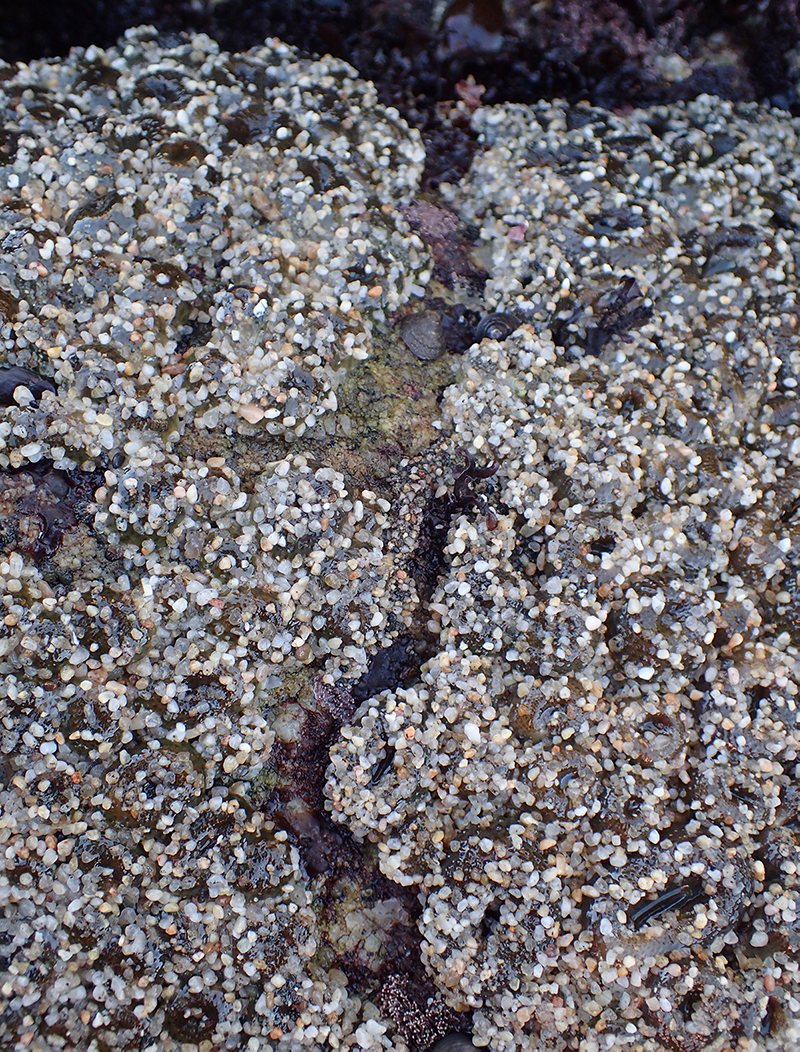
Okay, it’s hard to tell that these are sea anemones, but this is what they look like when the tide goes out and leaves them emersed. They pull in their tentacles, close off the oral disc, and cover themselves with sand grains. They look like sand but feel squishy, and will squirt water if you step on them. In this photo, each anemone is probably 4-5 cm in diameter.
There are three patches of anemones in the photo above, separated by narrow strips of real estate where there are no anemones. Each patch is a clone, essentially a group of many individual bodies sharing a common genotype. The anemones in each clone pack tightly together because they are all “self” to each other. However, they recognize the anemones of an adjacent patch as “non-self,” and they won’t tolerate the intrusion of neighbors onto their territory. Those strips of unoccupied (by anemones) rock are demilitarized zones. When the rock is submerged the anemones along the edges of the clones reach out their tentacles and sting their non-self neighbors. This mutual aggression maintains the DMZ and the result is that nobody gets to live there.
Because A. elegantissima lives relatively high in the intertidal, the clonal patches are usually emersed when I go out to the tidepools. Its congener, A. sola, lives lower in the intertidal and is more often immersed at low tide. Anthopleura sola is larger than A. elegantissima and is aclonal, meaning that it does not divide. Anthopleura sola also demonstrates quite dramatically what happens when anemones fight.
These two anemones, each about 12 cm in diameter, live side-by-side in a tidepool. You can see that each animal has two kinds of tentacles: (1) the normal filiform feeding tentacles surrounding the oral disc; and (2) thicker, whitish club-shaped tentacles below the ring of feeding tentacles. These club-shaped tentacles are called acrorhagi, and are deployed only for fighting. The acrorhagi and the feeding tentacles may contain different types of stinging cells, reflecting their different functions. All tentacles are definitely not the same.
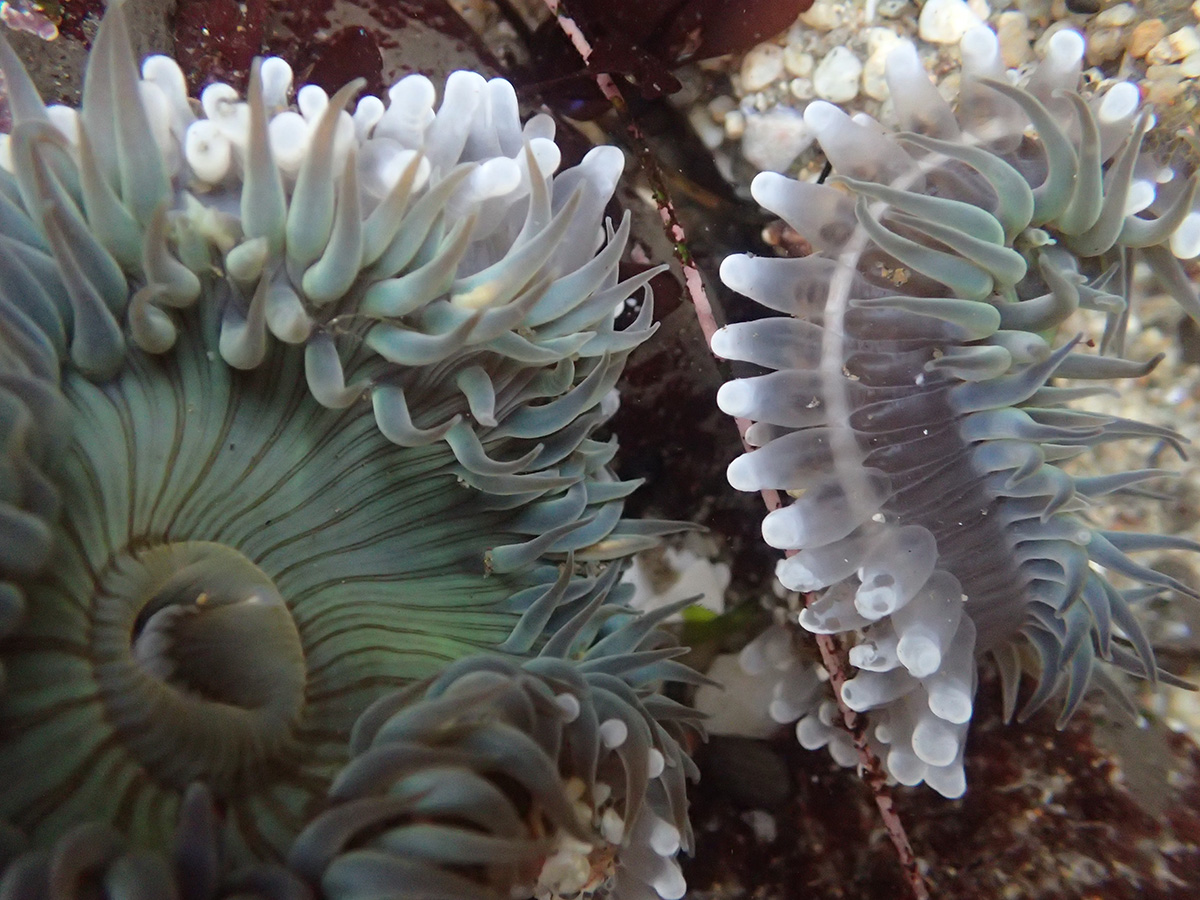
These animals, representing different genotypes, are non-self to each other, and so they fight. They inflate their acrorhagi, move their feeding tentacles out of the way, and reach across to sting each other. See how some of the acrorhagi on the animal on the right don’t have nice smooth tips? Those tips have been lost during battle with the animal on the left; the tips are torn off and remain behind to continue stinging the offender even after the tentacle itself has been with drawn. I encountered these animals at one moment of their long battle, and have no idea which one started the fight. Based on the snapshot of information that I have, my guess is that the animal on the right is the aggressor and the animal on the left is being attacked.
The goal of these fights is not to kill, but to drive the other away so that each anemone can monopolize its own space. Anemones are very sedentary creatures, but they can locomote, albeit very slowly. They do this by gradually stretching one edge of the pedal disc in the direction they want to move; the rest of the body gradually follows. This is similar to the mechanism by which clonal species such as Anthopleura elegantissima divide, in which the two halves of the animal walk away from each other. In the case of fighting A. sola, one of the anemones will eventually retreat and a more peaceful coexistence will be established.
These battles have been going on for over half a billion years, and you may get to witness one for yourself when you visit the intertidal. To watch anemones recognize self from non-self and act on that recognition, and to realize that the ability to make such distinctions has shaped the evolution of life on Earth, is to understand that the tidepool is in its own small way a mirror: a way of watching ourselves.

